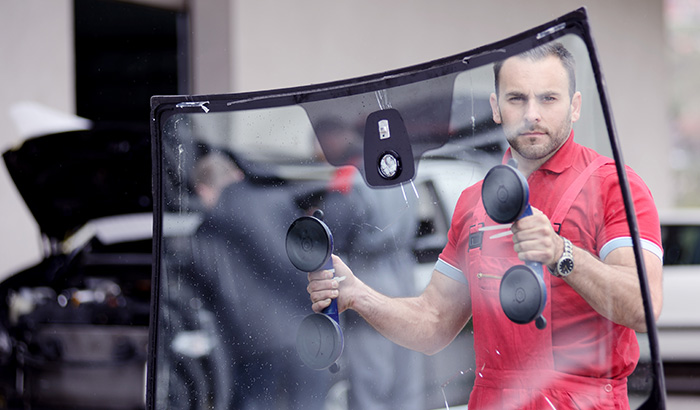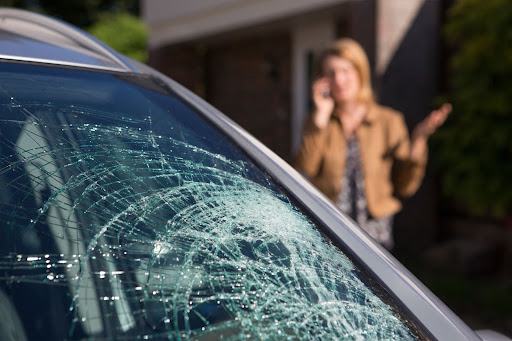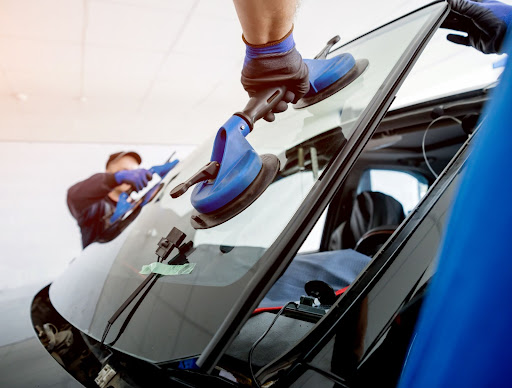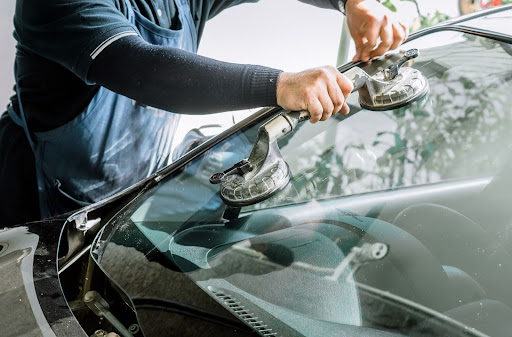
Your windshield is more than just a barrier against the elements and flying debris; it’s a key player in your car’s overall strength and safety. Think of it as the unsung hero of every journey, providing structural support during accidents and ensuring that airbags deploy correctly to protect passengers.
At its core, the windshield offers unobstructed visibility, which is crucial for safe driving. It’s your window to the world, allowing you to spot dangers and navigate confidently. Given its importance, maintaining your windshield in top-notch condition isn’t just recommended; it’s essential.
But how do you know when it’s time to replace your windshield? Several signs may indicate the need:
Significant Cracking: Minor chips often undergo repair successfully, but typically, you should replace windshields with larger cracks, especially if they spread or obstruct the driver’s line of vision.
Edge Chips or Cracks: Damages that begin at the windshield’s edge compromise its structural integrity, making replacements necessary.
Multiple Chips: If your windshield accumulates numerous chips, it might be more cost-effective and safer to replace your windshield entirely.
Internal Damage: Sometimes, damages aren’t externally inflicted. If your windshield shows signs of internal stress, like fogging between layers, it’s a clear signal to consider replacement.
Old or Worn-Out Windshields: Over time, windshields wear out and become less clear due to prolonged exposure to the sun, harsh weather, or other environmental factors. If the clarity is compromised, it’s time to think about getting a new windshield.
Knowing the condition of your windshield and recognizing when it needs a replacement makes a world of difference in your safety on the road. Keep reading to discover more about the replacement process, ensuring your car remains safe and works at its best.

Types of Windshield Damages
Before we tackle how to repair or replace damaged windshields, it’s important to know the different types of windshield damage. Here are some of the most common types:
Chips: These are minor dings or spots where a piece of the glass has been removed, often caused by rocks or road debris hitting the windshield. Depending on the size and location, chips sometimes compromise your visibility and the glass’s integrity.
Cracks: These are lines of damage that range from tiny hairline fractures to those that span the length or width of your windshield. Their origin could be a strong impact, temperature fluctuations, or even the vehicle’s structural movement.
Bull’s-eye Damages: As the name suggests, these damages look like a bull’s-eye target, characterized by a circular damage pattern, often caused by round objects like rocks. It looks like a chip surrounded by a ring.
Star Breaks: These damages appear as short cracks emanating outward from the central point of impact, resembling a star. They are often the result of direct impacts by small objects.

Determining Repair vs. Replacement
Knowing when to repair or replace your windshield is essential for safe driving. Small chips outside the main viewing area can typically be filled, while cracks under three inches that don’t reach the windshield’s edge are often fixable.
Similarly, star breaks and small bull’s-eye damages, generally less than an inch, are usually repairable. However, you should consider replacement for deep cracks, especially those extending to the edge, any damages directly in the driver’s line of sight that might cause distortions, or when there are multiple damages across the windshield, making it more fragile.
If any damage threatens the overall strength of the windshield or the safety of the car, a replacement is advised. Remember, the role of a windshield goes beyond providing a clear view; it’s a pivotal safety component of your vehicle. When in doubt about the severity of the damage, always consult with a professional to determine the best course of action.

The Windshield Replacement Process: A Step-by-Step Guide
Navigating through the windshield replacement process may seem daunting for many. However, having a clear understanding of the steps involved helps put your mind at ease. Here’s what to expect throughout the process, step by step:
1. Preparation
Before diving into the replacement process, take a moment to tidy up your dashboard. Remove those air fresheners, parking tags, and sun shades. It gives the technician room to work and keeps your stuff safe from accidental harm.
Got a garage? Perfect! Park your car inside to shield it from the unpredictabilities of Mother Nature, like gusty winds or dust. If a garage isn’t an option, just make sure there’s enough open space around the car for the technician to move freely. Every little step helps ensure a seamless replacement.
2. Removal of the Damaged Windshield
When it’s time for that windshield replacement, rest assured technicians come equipped with the right tools for the job. These tools aren’t your everyday garage gadgets; they’re specifically designed to lift out windshields without leaving a scratch on your car’s frame. They expertly cut through the adhesive, ensuring the windshield parts smoothly.
Think of it as a delicate dance between expertise and precision — the aim is always to swap out that windshield without nicking the paint or the metal surrounding it.
3. Cleaning and Prepping the Frame
Clearing away the old adhesive is like setting the perfect stage for your new windshield. It ensures that the fresh pane will snuggle up just right and bond securely to your car. And just before the new windshield takes its place, the technician will give the frame a once-over, looking for any sneaky rust spots or damages. It’s all about making sure the new windshield not only fits like a glove but also seals tight.
4. Application of a Primer
The frame gets a coat of primer to make it ready for the adhesive. It’s like priming a wall before painting — it ensures the bond between your car and the new windshield is as strong as possible. After all, we want that windshield firmly in place, keeping you safe and sound on the road.
5. Installation of the New Windshield
When your new windshield is ready to set, what holds it in place is a high-quality urethane adhesive renowned for its strength and durability. This superstar adhesive ensures your windshield stays put through bumps, weather, and whatever else life throws at you.
The technicians take their time to line up your new windshield just right, ensuring it fits perfectly with your car’s frame. A windshield that sits just right means you’ve got the best visibility on the road, upping your safety game.
6. Curing Time
Once your shiny new windshield is in place, a little patience goes a long way while the adhesive cures. The setting time allows the adhesive to create a strong bond.
How long should you wait? It might be as quick as 30 minutes or could stretch over a few hours. A lot depends on the type of adhesive used and the day’s weather. But don’t fret, your technician will give you the lowdown on when it’s A-OK to hit the road again.
Being informed about each stage helps set realistic expectations and ensures you get the best service possible.

Quality Windshield Repair and Replacement With Valley Glass
For Utah and Idaho residents needing windshield repair or replacement, Valley Glass stands out as the trusted local choice. Founded in 1956, this community-rooted company has built its reputation on delivering meticulous windshield services combined with unmatched customer care.
Whether you’re dealing with a minor chip or a more extensive crack in your car’s windshield, our seasoned team has the knowledge and skills to address it. While Valley Glass has expanded its services over the years, our dedication to superior service, customer loyalty, and high-quality products remains steadfast.
So, when you encounter a damaged windshield, contact Valley Glass. We’ll get you back on the road safe and sound as soon as possible.


Leave a Reply